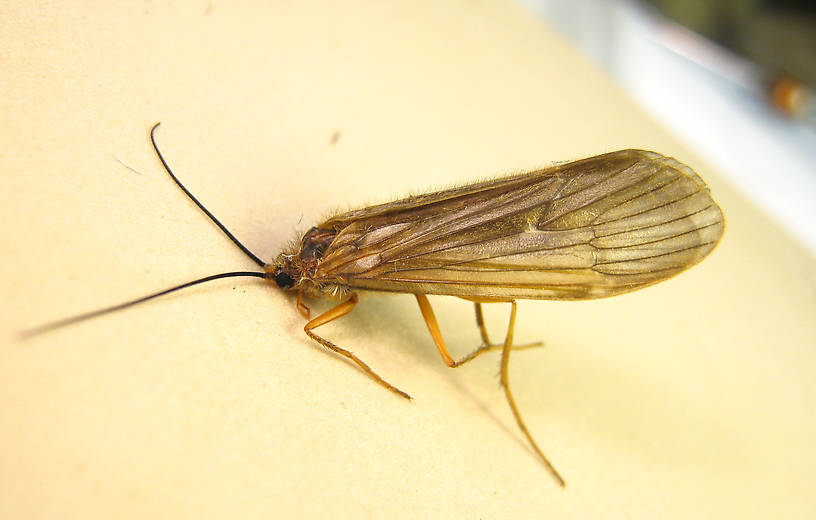
Hex Mayflies
Hexagenia limbata
The famous nocturnal Hex hatch of the Midwest (and a few other lucky locations) stirs to the surface mythically large brown trout that only touch streamers for the rest of the year.
Featured on the forum

This wild-looking little thing completely puzzled me. At first I was thinking beetle or month larva, until I got a look at the pictures on the computer screen. I made a couple of incorrect guesses before entomologist Greg Courtney pointed me in the right direction with Psychodidae. He suggested a possible genus of Thornburghiella, but could not rule out some other members of the tribe Pericomini.

Troutnut is a project started in 2003 by salmonid ecologist Jason "Troutnut" Neuswanger to help anglers and
fly tyers unabashedly embrace the entomological side of the sport. Learn more about Troutnut or
support the project for an enhanced experience here.
Giant Orange Sedges
This common name refers to only one genus. Click its scientific name to learn more.
Caddisfly Genus Dicosmoecus
These are sometimes called Giant Orange Sedges.
This is a superhatch in the West. Gary LaFontaine had a self-proclaimed obsession with Dicosmoecus, and he devotes several pages of Caddisflies to stressing the importance of its larvae, pupae, and adults. He wrote:
His reasons for this judgement are five traits of Dicosmoecus:
Personally I have only caught a good Dicosmoecus hatch one time, and on a secret desert spring creek. It reminded me of fishing Isonychia mayfly hatches back east, because there weren't enough bugs around to have trout rising consistently, but the presence of a particularly good food source in low numbers for a long time had them on the lookout for imitations. I had big trout cartwheeling out of the water to smash actively-fished imitations.
The question for fly fishermen seeking big trout is: "Which insects provide the best opportunity for catching such fish?" My list would be: Giant Orange Sedge (Dicosmoecus sp.), Salmon Fly (Pteronarcys californica, a stonefly), and the Michigan Mayfly (Hexagenia limbata). Dicosmoecus is the most important -- and the contest is not even close.
His reasons for this judgement are five traits of Dicosmoecus:
- Very large size: Adults 30mm long, and thick.
- Activity concentrated within 2-3 weeks.
- Emerges in the low, clear water of fall.
- Active during afternoon and evening.
- Abundant in rivers with sea-run trout.
Personally I have only caught a good Dicosmoecus hatch one time, and on a secret desert spring creek. It reminded me of fishing Isonychia mayfly hatches back east, because there weren't enough bugs around to have trout rising consistently, but the presence of a particularly good food source in low numbers for a long time had them on the lookout for imitations. I had big trout cartwheeling out of the water to smash actively-fished imitations.

This specimen is 26 mm.
- Entoman
- Entoman
See 3 more specimens...
References
- LaFontaine, Gary. 1981. Caddisflies. The Lyons Press.

